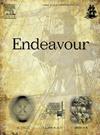黄杨木项目中的数据、计算和用户界面
IF 0.5
4区 哲学
Q3 HISTORY & PHILOSOPHY OF SCIENCE
引用次数: 0
摘要
2011年,安大略美术馆(AGO)的文物保修员Lisa Ellis和策展人Sasha Suda开始了一个小规模的研究项目,重点研究一组16世纪北欧微型黄杨木雕刻的制造秘密。随着其他博物馆的专家和研究机构的科学家,以及计算成像、数据库概念和构建方面的专家,以及一名高级数字艺术家、设计师和技术专家的加入,这家企业慢慢发展起来。只有结合了跨学科的综合技能和知识,这些物体的精湛结构才被发现。在这个项目中,数字数据的收集和生产有两个并行的基本阶段。第一项研究集中在微型ct扫描上,研究这些小型艺术品的结构,这项研究最初是由AGO和加拿大伦敦西部大学共同开展的。与此同时,一个雄心勃勃的、私人资助的高分辨率数码摄影活动开始捕捉世界上每一个已知的微型哥特式黄杨木物体的例子。它们用于填充可公开访问的数据库。以下详细描述了黄杨木项目(2011-2016)的发展,并揭示了跨学科研究人员社区是如何建立的。黄杨社区的合作精神比展览项目更长久,积累的丰富数据继续结出果实。本文章由计算机程序翻译,如有差异,请以英文原文为准。
Data, computation and user interfaces in the Boxwood Project
In 2011, conservator Lisa Ellis and curator Sasha Suda of the Art Gallery of Ontario (AGO), started a small-scale research project focused on the manufacturing secrets of a group of sixteenth century, northern European miniature boxwood carvings. The venture slowly grew with the addition of specialists from other museums and scientists in research institutions as well as experts in computational imaging, database conception and construction, and a senior digital artist, designer, and technologist. It was only with the combined skillset and knowledge of this interdisciplinary ensemble that the virtuosic construction of these objects was uncovered. There were two concurrent and foundational phases of digital data gathering and production in the project. The first centred on micro-CT scanning to investigate the structure of these diminutive artworks, a venture carried out initially by the AGO and at Western University, London, Canada. Simultaneously, an ambitious, AGO-driven but privately funded, high resolution digital photography campaign set out to capture each known example of miniature Gothic boxwood objects in the world. These were used to populate a publicly accessible database. The following describes the development of the Boxwood Project (2011–2016) in detail and reveals how the community of interdisciplinary researchers was built. The co-operative spirit of the boxwood community outlived the exhibition project and the abundance of data amassed has continued to bear fruit.
求助全文
通过发布文献求助,成功后即可免费获取论文全文。
去求助
来源期刊

Endeavour
综合性期刊-科学史与科学哲学
CiteScore
1.10
自引率
16.70%
发文量
19
审稿时长
49 days
期刊介绍:
Endeavour, established in 1942, has, over its long and proud history, developed into one of the leading journals in the history and philosophy of science. Endeavour publishes high-quality articles on a wide array of scientific topics from ancient to modern, across all disciplines. It serves as a critical forum for the interdisciplinary exploration and evaluation of natural knowledge and its development throughout history. Each issue contains lavish color and black-and-white illustrations. This makes Endeavour an ideal destination for history and philosophy of science articles with a strong visual component.
Endeavour presents the history and philosophy of science in a clear and accessible manner, ensuring the journal is a valuable tool for historians, philosophers, practicing scientists, and general readers. To enable it to have the broadest coverage possible, Endeavour features four types of articles:
-Research articles are concise, fully referenced, and beautifully illustrated with high quality reproductions of the most important source material.
-In Vivo articles will illustrate the rich and numerous connections between historical and philosophical scholarship and matters of current public interest, and provide rich, readable explanations of important current events from historical and philosophical perspectives.
-Book Reviews and Commentaries provide a picture of the rapidly growing history of science discipline. Written by both established and emerging scholars, our reviews provide a vibrant overview of the latest publications and media in the history and philosophy of science.
-Lost and Found Pieces are playful and creative short essays which focus on objects, theories, tools, and methods that have been significant to science but underappreciated by collective memory.
 求助内容:
求助内容: 应助结果提醒方式:
应助结果提醒方式:


